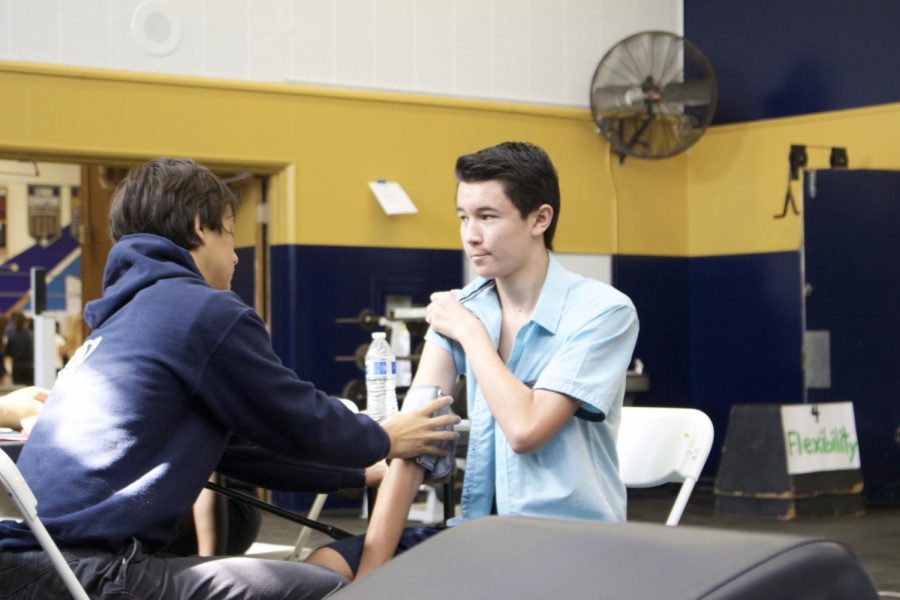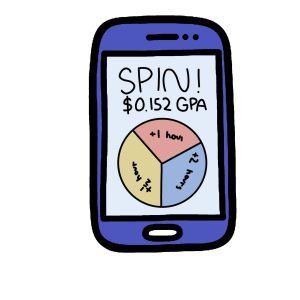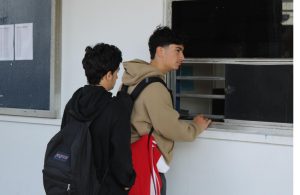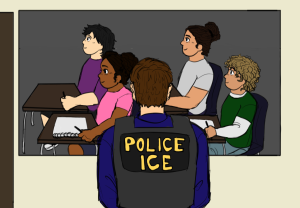Let’s Get Physical: BVH Sports Medicine program holds sports physicals for student athletes
Member of the Sports Medicine club and volunteer senior Kevin Tang administers a blood pressure test on a student getting a sports physical.
August 12, 2019
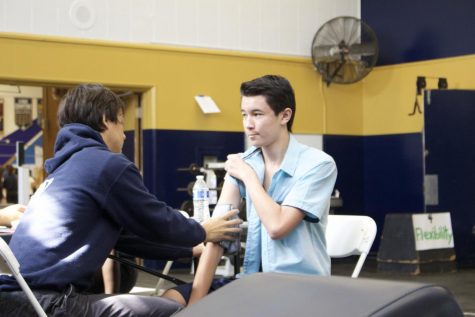
The gym swarmed with around 200 Bonita Vista High students on Saturday, July 27, looking to get a physical that would clear them for playing sports during the 2019-2020 school year. There were many volunteers assessing everything from height, weight, eyesight, blood pressure, flexibility and any possible health issues.
Volunteering were students taking the CTE Sports Medicine course, Sports Medicine students part of the internship program, physical therapists from SDSU and doctors from Chula Vista Family Medicine Residency Program.
“These [Sports Medicine] interns are students that are being placed in various job settings, including working here as a help in the athletic training in Sports Medicine at our school. They were responsible today for helping make our physicals move forward,” Sports Medicine pathway instructor, Honors Anatomy and Physiology teacher and head athletic trainer George Lafiguera said.
Students getting their physical first paid a $20 fee and checked the paperwork to ensure all the information was filled out correctly.
The money raised from the event will be used to purchase more equipment for the Sports Medicine class and to fund more events where students can get their physicals.
“All the money is going into the Sports Medicine account. The mission of our Sports Medicine club is to be able to better the care for the athletes, and also to spark interest for the student body to pursue the Sports Medicine pathway,” Lafiguera said.
Next patients had their height and weight taken by Sports Medicine students. Next, Sports Medicine volunteers evaluated student’s eyesight.
“Well, [the] majority of the stuff is easy, because you already have it, like eyesight. But the blood pressure is kind of difficult,” senior and Sports Medicine student Omar Mahmalji said.
Students’ blood pressure needed to be anywhere between 80 and 130 in order to pass the blood pressure portion of the physical. Senior and Sports Medicine intern Catalina Pino mentioned there were many problems with athlete’s blood pressure and recommended that for the possible next time they should have doctors conduct that portion of the physical.
“The kids seeing their friends might make them a little more nervous, so maybe that’s why some of them are failing their blood pressure [test],” Pino said.
Moving into the wrestling room, athletes had to demonstrate flexibility and motion. Second year SDSU physical therapy student Lindsey Rummings described how athletes had to be able to move their head over their shoulders, and their arms need to be able to move to the side, up and down and be able to bend.
Next in the process students had to meet with the doctors to ensure they were all healthy. They have heart screenings, a reflex test and a medical history check.
“Having an event like this, where we can screen everybody at once, [students] don’t have to go to the doctor, it’s more convenient. Second of all, as doctors we’re looking for any sort of heart disease and if there’s any red flags for us on the physical exam, we want to refer them to see their doctor and get further studies. I think just doing [the physical] with the coaches here, the coaches become aware of things that they need to watch out for,” resident physician Athena Arias M.D. said.
To prepare for the event, many of the students volunteering and the interns were required to meet in Lafiguera’s classroom during seventh period. Many meetings took place with Lafiguera, the administration, organizations and doctors.
“[The students] exceeded my expectations. I trained them beforehand, but I wanted to see how they could interact with patients and can maintain a professional attitude while working in a medical setting. It was good to see that they’re going to do well in the future,” Lafiguera said.
Rummings said other schools should use this event as an example to build upon and create more events similar to the one that took place at BVH.
“I think that [it is] a great idea [to have students conduct parts of the physical] because it gives them an opportunity to learn what’s involved and what’s abnormal. And of course, if anything is abnormal, [as] doctors we’re always [supervising them]. It was a great learning opportunity for them,” Arias said.
Lafiguera is unsure if this is going to be an annual event because all of the doctors and physical therapists were volunteers, and it depends if they’re willing to volunteer again in the future. However, physical therapist Joe Bailey said he would participate again if this event were to be held again next year.
“I just want to say [that] there was good organization, very helpful people and the students were all pleasant,” Bailey said.
Parents like Melissa de la Cruz and Ron Reichard decided to have their children attend the event because it was “convenient” and cheaper than going to their doctor.
“It’s nice to know that the money for the physical is going back to the Sports [Medicine] program. We’re happy about that,” Reichard said.
Overall, Pino, Mahmalji and Sabal thought the event was a success because it helped out families by being more accessible, cost less and take less time than attending a regular doctor’s office to get a physical.
“I [one] hundred percent think it’s amazing that there’s an organization that’s willing to give up a Saturday to give back to the community by just doing something that they love. I think this is an amazing event and other people should see what they’re doing here and try to build upon it because community outreach is really important,” Rummings said.

